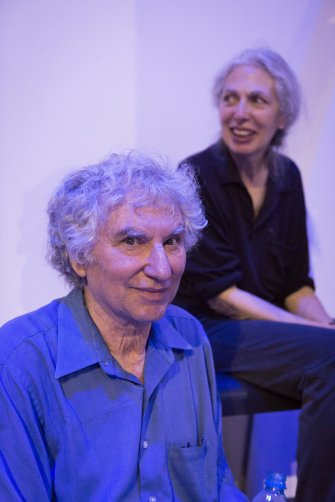Ken Jacobs
Ken Jacobs è uno dei fondatori del cinema d'avanguardia statunitense. Ha lavorato incessantemente per oltre cinquant'anni attraversando le frontiere tra cinema, video e live media. Inizia la sua carriera agli inizi degli anni '50 con il guerrilla cinema girato nelle strade della sua città di nascita, New York, con spirito anarchico ed esuberante - e politicamente astuto. Fanno parte di questo periodo, un nutrito gruppo di lavori anticipatori, tra cui Little Stabs at Happiness, cortometraggio incluso in The Whirled, opera dell'allora giovanissimo Jack Smith. Da questa prima fascinazione per il cinema sperimentale Jacobs si accosta progressivamente al found footage, un salto segnato dalla decostruzione narrativa e l'illusionismo di Tom, Tom the Piper's Son, del 1969, film rimasto celebre per i metodi di manipolazione e gonfiaggio effettuati su found footage, capaci di trasformare la pellicola trovata in un lavoro di cinema puro, rivelatorio e mozzafiato. Il cinema delle origini e la fotografia del XIX secolo sono centrali nel lavoro di Jacobs, fornendogli gli strumenti per sviluppare una critica ai limiti estetici, ideologici e tecnologici che definiscono il cinema ed il suo apparato. Negli anni '70 Jacobs porta questa critica su un livello ulteriore, introducendo il concetto di 'paracinema', termine che indica un metodo radicale di produrre immagine in movimento, come nel caso delle Nervous System Performances, trasformazioni dell'esperienza cinematografica con l'utilizzo simultaneo di due proiettori 16mm e con diverse forme di produzione del suono, che esplorano le dimensioni audio-visuali nascoste tra le pieghe della pellicola. La sua curiosità per le tecnologie lo ha portato, parallelamente, a verificare le potenzialità del video, creando un incontro tra digitale, cinema delle origini, fotografia e immaginario 3D, che attraversa magicamente un arco tra il XIX ed il XXI secolo e ha reso possibili lavori potenti e sublimi come Krypton is Doomed and Razzle Dazzle: The Lost World. Tra le invenzioni più importanti di Jacobs, resta comunque la Nervous Magic Lantern, misteriosa performance di luci ed ombre che riporta il cinema alle sue radici più essenziali.
Ken Jacobs is one of the founders of the American avant-garde cinema. He has been working ceaselessly and boundlessly in film, video, and moving image performance for over 50 years. Jacobs began working in a mode of guerilla cinema, shooting anarchic and exuberant - yet also politically astute - theatrics in the streets of his native New York in the early 1950s, including a number of prescient and Beat-infused works - Little Stabs at Happiness, the shorts included inThe Whirled - made with a very young Jack Smith. Fascinated with early cinema and experimental film from a young age, Jacobs gradually turned to found footage as a dominant inspiration, a breakthrough marked by his seminal deconstruction of cinematic narrative and illusionism Tom, Tom the Piper's Son (1969), which famously manipulates and expands a 1905 film of the same name to create a breathless and revelatory work of pure cinema. Early 'primitive' cinema, and increasingly, 19th-century photography, has remained a touchstone in Jacobs' work and a principal tool to launch an extended critique of the aesthetic, ideological, and technological limits defining film and the cinematic apparatus itself. In the 1970s, Jacobs took this critique to another level, defining what he termed 'paracinema', a radical mode of moving image performance that included his Nervous System Performances, transformative film experiences that use two simultaneous 16 mm projectors and a variety of live sound and music to explore those audio-visual dimensions hidden within the film strip. Endlessly curious about technology, Jacobs embraced the possibilities of video in a meeting of the digital, early film/photography and 3-D imagery that magically bridges the 19th and 21st centuries and has given way to such powerful and sublimely beautiful works as Krypton is Doomed and Razzle Dazzle: The Lost World. Among Jacobs' most important inventions is his Nervous Magic Lantern, a mysterious and mesmerizing performance of light and shadow that returns to cinema's most essential roots, and which he evocatively describes as 'cinema without film or electronics'.

